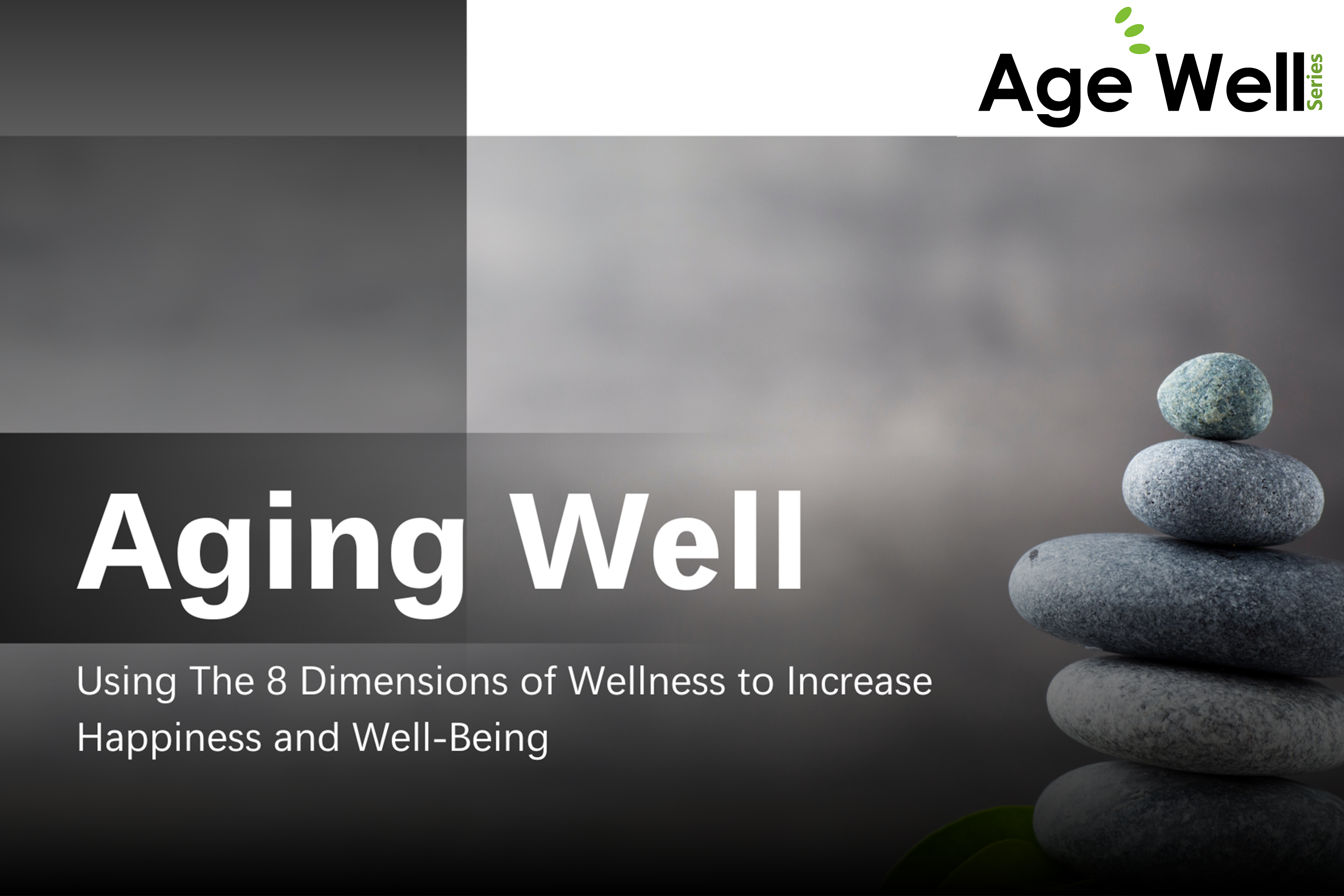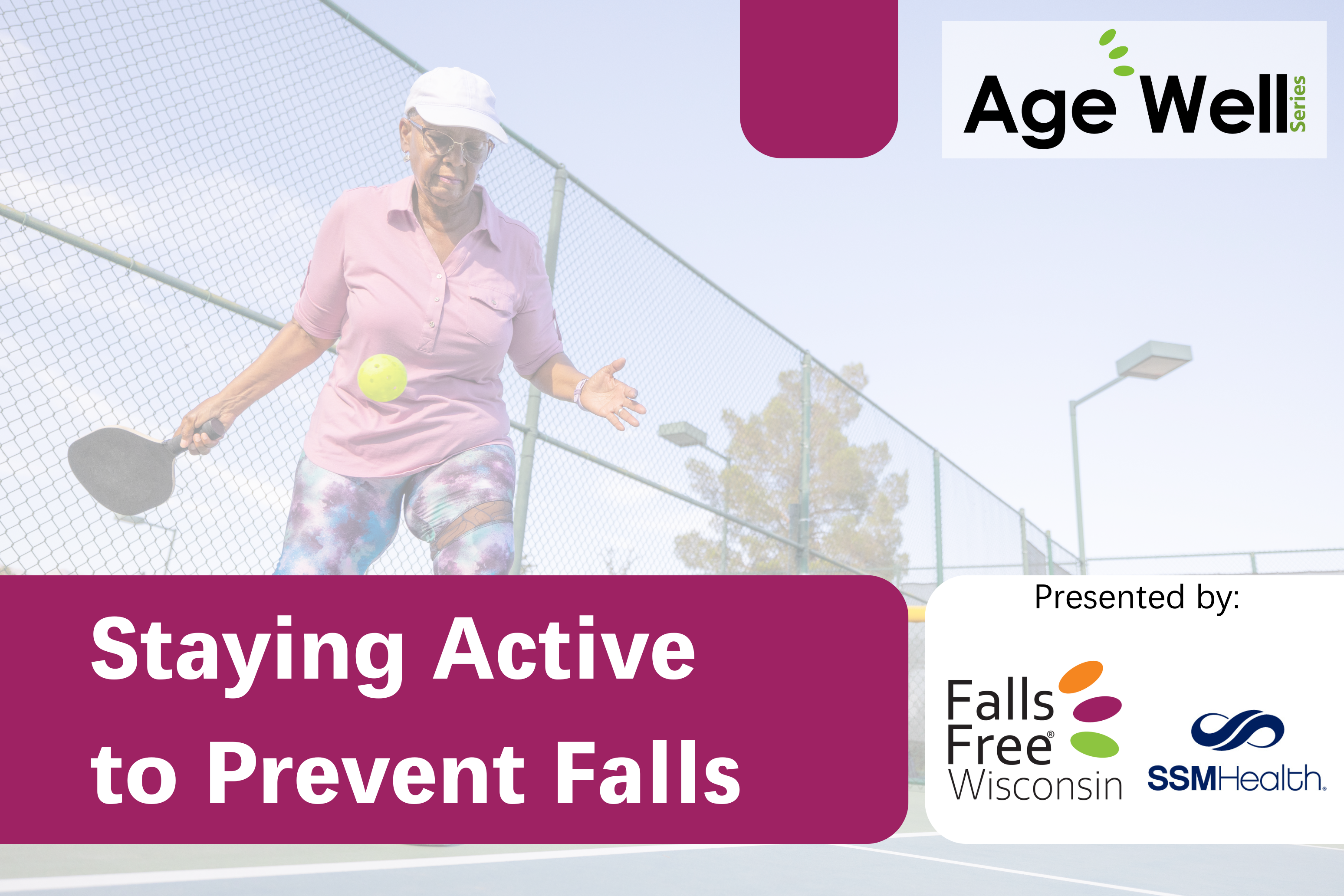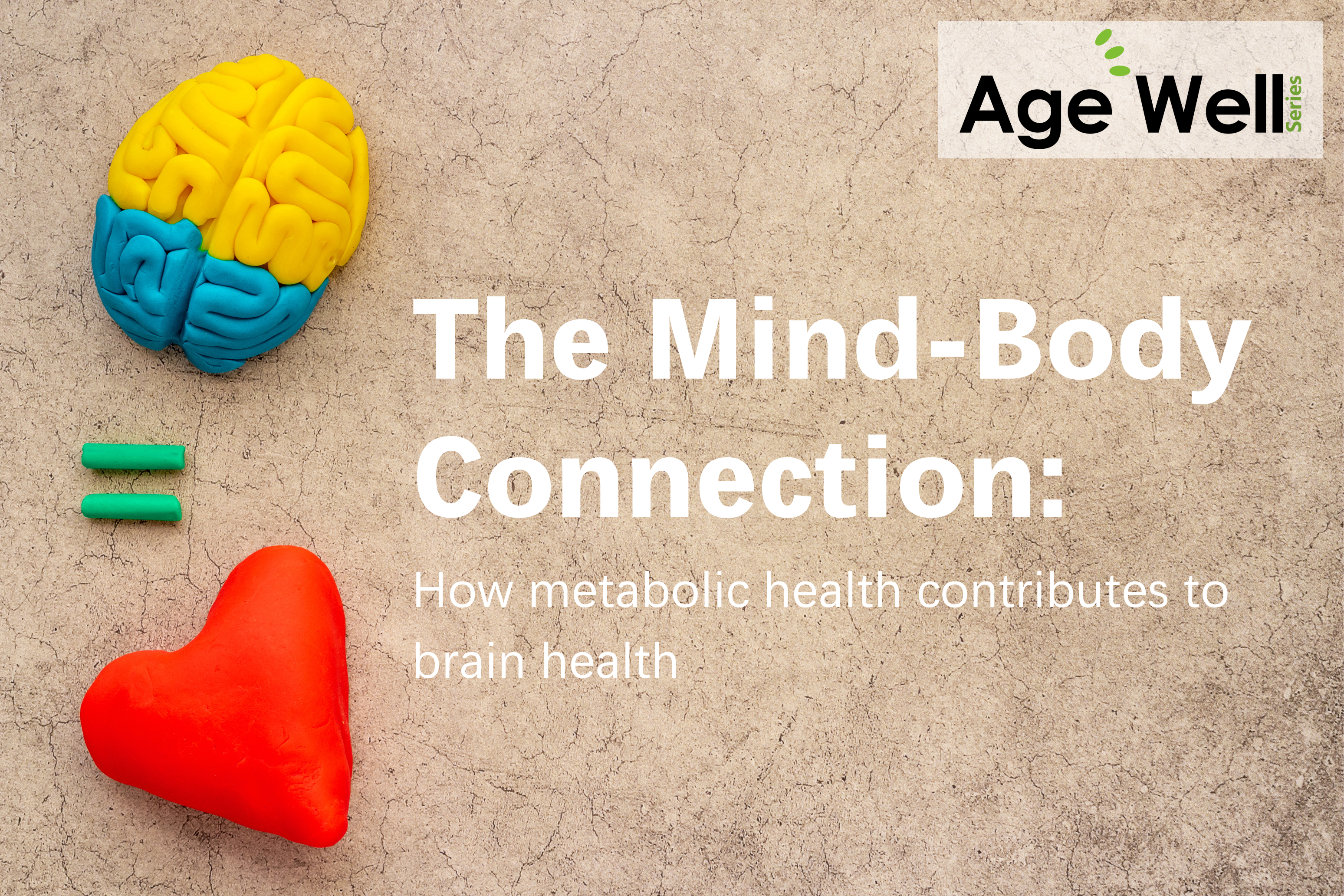
Age Well with WIHA
A newsletter from the Wisconsin Institute for Healthy Aging
Age Well with WIHA: May/June 2024
WIHA’s newsletter is published bi-monthly and sent by email. View the email newsletter online or read the full stories below. Don’t forget to subscribe!
Falls Prevention at the Farmer’s Market
The time is coming for bright summer days and farm market stands to start popping up throughout the state. Not only are farmer’s markets a great opportunity to walk around and get some vitamin D, but you can also find fresh foods rich in vitamin D and calcium, which are important for falls prevention. While the best source of vitamin D is sunshine, there are some foods that contain this nutrient as well. Vitamin D helps your body absorb calcium- so they work hand-in-hand!
According to the National Institute of Health, the amount of calcium and vitamin D you need each day is dependent on your age and sex.
- Males aged 51-70 need 1,000 mg of calcium per day and 15 mcg (600 IU) of vitamin D per day.
- Females aged 51-70 need 1,2000 mg of calcium per day and 15 mcg (600 IU) of vitamin D per day.
- Adults aged 71 and older need 1,200 mg of calcium per day and 20 mcg (800 IU) of vitamin D per day).
If you’re not sure you’re getting enough vitamin D and calcium in your diet, talk to your provider at your next appointment.
Many foods in the United States are fortified with vitamin D, but it can be found naturally in fatty fish (trout, salmon, tuna, mackerel), beef liver, egg yolks, cheese, and mushrooms. Calcium-rich foods include:
- Dairy products like milk, cheese and yogurt
- Canned sardines
- Kale
- Broccoli
- Bok choy
- Fortified juice, plant-based milk alternatives, tofu and breakfast cereals
The next time you visit a farm market (or grocery store!), consider finding ingredients for a meal rich in vitamin D and calcium. Here’s one to try!
Smoked Salmon Egg Salad (adapted from Taste of Home)
Ingredients
- 4oz smoked salmon, chopped
- 6 large, hard-boiled eggs, chopped
- 1½ cups spinach
- ¾ cup mayonnaise (or substitute with Greek yogurt or half Greek yogurt and half ricotta cheese)
- 1 teaspoon dill weed
- ½ teaspoon lemon juice
- ¼ teaspoon salt
- 1/8 teaspoon pepper
Directions
- In a large bowl, combine the mayonnaise, dill weed, lemon juice, salt and pepper.
- Stir in the chopped eggs and salmon.
- Place 1/3 cup of mixture on bread of choice and top with spinach leaves.
Find more information about how vitamin D and calcium can impact your risk of falls, and other tips and tricks, at FallsFreeWI.org.
Isolation, Loneliness, & Your Health
At one time or another, we’ve all experienced loneliness. For most of us, it’s temporary. But for many older adults, being isolated and lonely is a constant reality – one that has real physical, emotional, and psychological consequences including greater risk for cardiovascular disease, depression, dementia, and even abuse or neglect. In fact, a recent advisory from the U.S. Surgeon General indicates that lacking social connection can increase the risk for premature death as much as smoking up to 15 cigarettes a day!
The good news is that there are things we can do to help increase our sense of belonging and social connections. Call a friend you haven’t spoken to in a while. Stop by for a visit. Schedule a video chat. Offer a ride to a neighbor. Invite someone to an activity or to join you for coffee. Start a new hobby. Join a class or educational workshop. Volunteer. Care for others or spend time with younger generations. Not only will you benefit from the interaction – others involved will too.
Make a plan to reach out. It can make a world of difference for yourself, and others who may be alone or lonely. The simple act of striking up a conversation with a friend, family member, or neighbor, and showing you care can benefit not only your social health, but your emotional and physical wellness too (find more information about these and other dimensions of wellness here).
The Wisconsin Coalition for Social Connection, coordinated by the Wisconsin Institute for Healthy Aging, is working to minimize the effects of social isolation and loneliness for older adults and people with disabilities throughout the state. If you’re interested in learning more, visit our page or take the self-evaluation to determine your level of connection.
Health Benefits of Exercise
In this Issue
Age Well Series
Thanks to WIHA’s Executive Director, Jill Renken, for presenting at April’s Age Well Series on the 8 Dimensions of Wellness!

Upcoming Age Well Series
May
Click the image to open the flyer
We would like to thank SSM Health for their generous support as a presenting sponsor of WIHA’s new Age Well series! SSM Health is a not-for-profit health system providing high-quality, compassionate, and personalized care to community members in Wisconsin, Illinois, Missouri, and Oklahoma. SSM Health is also dedicated to falls prevention and is a member of our Falls Free(R) Wisconsin Coalition. Thank you, SSM Health! Your contribution to our mission is greatly appreciated!
June
Click the image to open the flyer
Featured Program: Healthy Living with Chronic Pain
Many times, pain is a result of an injury, overdoing an activity, or illness. However, when pain lasts beyond three months, this could be considered chronic pain. Chronic pain is one reason adults seek medical care because the pain interferes with their mobility, daily activities, and/or reduces their quality of life. According to the Center for Disease Control and Prevention, in 2016, approximately 50 million adults in the United States were experiencing chronic pain. Finding a way to manage chronic pain can be important.
There are self-management skills that can help you get your life back and find ways to manage the pain. If you have chronic pain, healthy eating may mean that you need to be more selective with the foods that you eat and the amount you eat. Eating a variety of foods, especially vegetables and fruits, can help decrease your pain. Also, having good sleep habits such as having a regular rest and sleep schedule, making sure that you have a comfortable bed, and that the room is a comfortable temperature can help. Next, learning the signals that your body is sending you that you are overdoing an activity can be important. You may need to modify an activity or balance the activity with rest to help manage your pain. Finally, planning regular exercise is important to control chronic pain. Moderate exercise can be accomplished in short periods to help lessen pain, improve functioning, and boost your mood.
Different pain management strategies will not necessarily eliminate your pain. However, the strategies may help you better control your pain. Healthy Living with Chronic Pain is an evidenced-based workshop designed to explore ways to better manage your chronic pain and help you build a “pain management toolbox.” This small group workshop covers a variety of topics including physical and emotional well-beings, healthy eating, better sleep, and better communication.
Learn more about Healthy Living with Chronic Pain
Research: Healthy Living with Chronic Pain is researched and shown to improve confidence in pain management, lessen pain and dependence on others, improve mental health, improve energy, reduce pain, improve understanding of pain and coping skills.
Who is it for: Healthy Living with Chronic Pain is designed for any adult who has or who lives with someone with chronic pain.
How to participate: You can participate in Healthy Living with Chronic Pain in-person, at a distance, or on your own! Find a workshop near you!
“Habit building -like you have to stick with it and re-enforce it. Even when you’re doing well, you have to reassess, so you are not necessarily getting away from the good habits you have built. Learning to always be accountable to yourself.”
Dawn Gruber
Racine County
Find a Workshop
Take charge of your health by taking a WIHA workshop. We offer in-person and virtual (online or by phone) programs that give you the tools to age well. Getting started is easy – simply click the link below.
Enjoyed the newsletter? Subscribe today!



